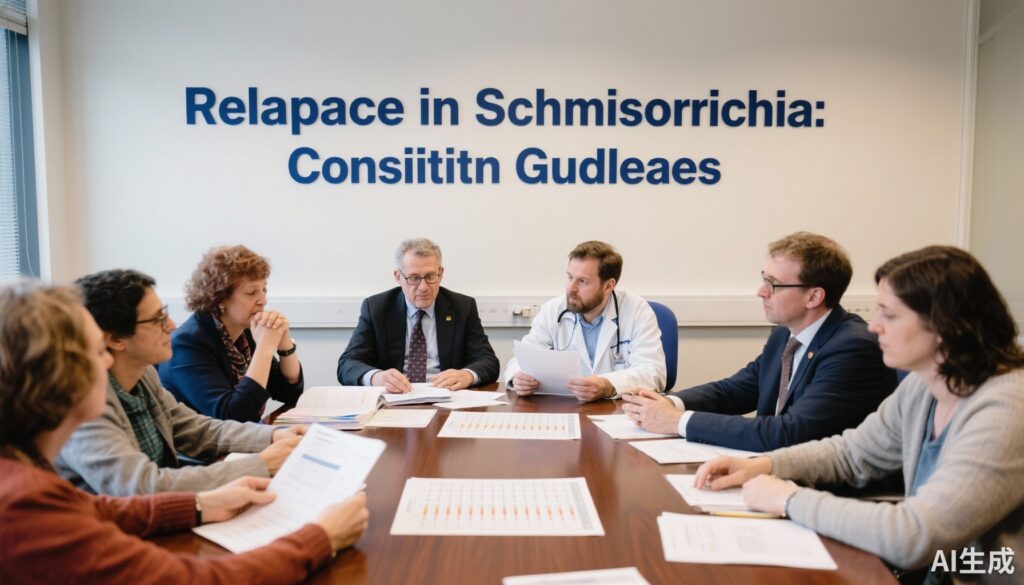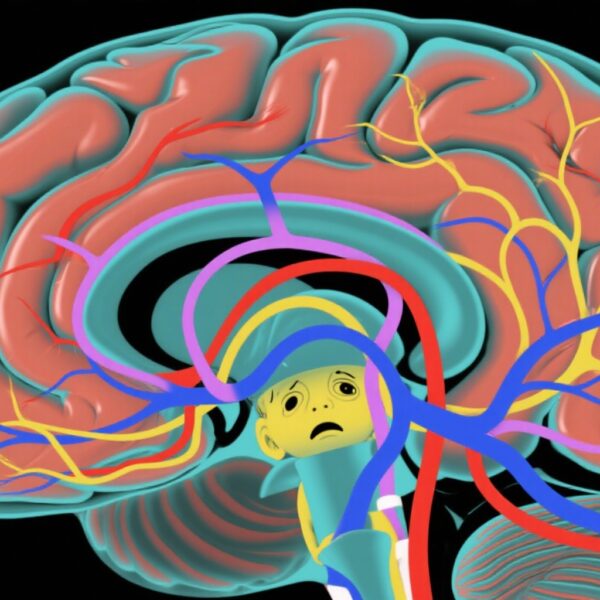Introduction and Context
Relapse prevention is central to treating schizophrenia: recurrent psychotic episodes worsen disability, increase hospitalization and healthcare costs, and reduce quality of life. Yet, despite decades of research, there has been no universally accepted operational definition of “relapse.” That absence has produced wide variation across clinical trials and observational studies — undermining comparability, biasing meta-analyses, and complicating the translation of research findings into practice.
In response, an international team led by Howes and colleagues conducted a systematic review of randomized controlled trials of relapse (2012–2024) and used a multiphase Delphi process involving more than 100 experts from 37 countries — including people with lived experience — to develop consensus criteria. Their results and recommendations were published in the American Journal of Psychiatry (Howes et al., 2025). This article summarizes the core recommendations and practical implications for clinicians, researchers, and policymakers.
Why this consensus matters now
– Heterogeneous relapse definitions impede pooled evidence and regulatory interpretation.
– Many trials rely on clinician judgment alone or on relative symptom changes that vary by baseline severity.
– A standardized, operational definition enables more reliable comparisons across pharmacologic and nonpharmacologic interventions and better risk-factor research.
New Guideline Highlights
Major themes of the Howes et al. consensus:
– Standardize: Use validated symptom-rating instruments consistently across studies (e.g., PANSS, BPRS, CGI) rather than idiosyncratic scales or undocumented clinical judgment.
– Operationalize: Define relapse with explicit, reproducible criteria covering three temporal components — pre-baseline, baseline, and relapse event — with both optimum and minimum criteria for different research settings.
– Prefer absolute symptom change over relative change: Absolute thresholds are less sensitive to baseline severity and more comparable across studies.
– Use corroborating evidence: Symptom change should be supported by objective events such as hospitalization, initiation of crisis/home-treatment, documented risky behavior (violent, self-harm), or need for substantial medication change.
– Improve reporting: Adopt a minimum reporting checklist to allow assessment of how relapse was defined and measured, enabling meta-analysts and readers to judge study validity.
Key takeaways for clinicians and researchers
– Avoid defining relapse by clinician global judgment alone: add standardized scores or objective events.
– Report the precise scales, thresholds, time windows, and any corroborating events used to declare relapse.
– For multi-site and international studies, pre-specify whether minimum or optimum criteria are applied and justify any deviations.
Updated Recommendations and Key Changes
What the consensus adds beyond prior practice
– Explicit three-part structure: pre-baseline, baseline, and relapse components — previously, many trials did not report or standardize these windows.
– Shift from relative (%) change to absolute symptom change on validated scales.
– Consensus endorsement of a dual-track approach: “optimum” criteria (recommended where resources allow) and “minimum” criteria (for pragmatic or resource-limited settings).
– A formal reporting checklist to increase transparency and reproducibility.
Why these changes now
– Systematic review (2012–2024) found extreme heterogeneity: 85% of trials used clinician judgment to define relapse, 58% relied on relative symptom change, and only two pairs of studies used the same criteria. The lack of standardization undermines pooled analyses and may bias estimates of treatment efficacy.
Topic-by-Topic Recommendations
Below is a synthesis of the consensus recommendations in practical form. The full consensus paper contains detailed operational thresholds and examples.
1) Pre-baseline (what should be documented before the baseline assessment)
– Minimum: Detailed recent clinical history (medication changes in the prior 4–12 weeks, recent substance use, intercurrent medical illness), and a statement that the patient is not currently in an acute relapse at study entry.
– Optimum: Documented stability window (e.g., symptom ratings and medication stability across at least two assessments separated by a defined interval) to establish a reliable baseline.
2) Baseline assessment (defining the starting point from which change is measured)
– Minimum: Use at least one validated symptom-rating instrument (e.g., Positive and Negative Syndrome Scale [PANSS] or Brief Psychiatric Rating Scale [BPRS]) and the Clinical Global Impression – Severity (CGI-S) at a pre-specified time (for example, study entry).
– Optimum: Dual baseline assessments (e.g., 2 weeks apart) with standardized rater training and inter-rater calibration; capture functioning scales and collateral history.
3) Relapse definition (core components)
The consensus recommends combining symptom change with corroborating evidence rather than relying on either alone.
– Symptom measures: Prefer absolute thresholds of worsening on validated instruments (consensus favors absolute change rather than relative % change) because absolute change is less biased by baseline severity and more comparable across trials.
– Corroborating evidence: Hospitalization, admission to home-based crisis teams, urgent increase in antipsychotic dose or return to long-acting injectables for clinical deterioration, documented violent or suicidal behavior attributable to psychosis, or emergency department visits for psychotic symptoms.
– Minimum criteria example (qualitative): A reproducible, pre-specified increase in symptom rating on a validated scale plus at least one corroborating objective event (hospitalization or documented emergency intervention).
– Optimum criteria example (qualitative): A pre-specified absolute increase on a validated symptom scale confirmed at two assessments within a defined short interval and accompanied by objective corroboration or meaningful deterioration in functioning.
Note: The consensus paper supplies numerical examples and recommended time windows and thresholds for commonly used instruments; readers should consult the full guideline for specific operational numbers used in research.
4) Instruments and outcomes recommended
– Standardized instruments: PANSS, BPRS, CGI, with clear a priori specification of the subscale or total score used.
– Domain-specific criteria: When relapse is domain-focused (e.g., positive symptoms only, negative symptoms, or cognition), explicitly state which domains and instruments are used and whether domain-specific thresholds are applied.
– Functional outcomes: Include measures of functioning and care utilization (hospitalization, home treatment) as secondary outcomes and potential confirmatory evidence of relapse.
5) What should not be used alone
– Clinical judgment without standardized measures: the consensus found this was the dominant method historically but recommends it not stand alone.
– Relative (%) change alone: depends heavily on baseline severity and can distort comparability.
– Single uncorroborated self-reports or isolated milestone events without symptom confirmation (except in specific urgent safety scenarios).
6) Reporting checklist (minimum reporting items)
Studies should report at least the following:
– Exact symptom instruments and versions used (e.g., PANSS, BPRS, CGI), rater training, and inter-rater reliability where available.
– The temporal windows for pre-baseline and baseline assessments.
– Whether absolute or relative thresholds were used; the numeric threshold(s) applied.
– Any corroborating events or objective criteria (hospitalization, emergency visits, home treatment, violent or suicidal behavior) and how these were adjudicated.
– Handling of missing data and rater blinding procedures.
– Whether minimum or optimum criteria were applied and rationale for deviations.
Expert Commentary and Insights
Delphi process and lived-experience inclusion
– The consensus used a rigorous multiphase Delphi approach with over 100 international experts and people with lived experience. Inclusion of lived experience representatives was a deliberate choice to ensure the criteria capture clinically meaningful deterioration and patient priorities.
Key expert positions
– Strong consensus: Use validated measures and objective corroboration; avoid unstructured clinical judgment alone.
– Moderate consensus/areas of debate: The exact numeric thresholds for absolute symptom change and whether the same thresholds should apply across all settings and cultural groups. Experts recognized trade-offs between sensitivity (detecting true relapse early) and specificity (avoiding false positives that may lead to unnecessary interventions).
Controversies and practical issues
– Scales selection: PANSS is widely used in trials but is time-consuming; BPRS is shorter but may lack granularity for some domains. Experts recommended that choice of instrument should consider study aims and setting, and report rationale clearly.
– Resource-limited settings: The dual-track (optimum vs minimum) approach offers flexibility; however, experts emphasized the need for minimum acceptable standards to keep results interpretable across studies.
– Regulatory implications: Standardizing relapse definitions could influence labeling, trial endpoints, and approval pathways. Regulators and trialists will need to agree on operational thresholds for pivotal trials.
Future research needs highlighted by the panel
– Validation studies comparing proposed absolute thresholds against long-term functional outcomes and patient-centered endpoints.
– Cross-cultural validation of measures and thresholds, including translation and cultural adaptation of instruments.
– Development of reliable brief measures for routine clinical use that align with research-grade scales.
Practical Implications
For researchers
– Pre-specify relapse definition in protocols using the consensus structure and include the reporting checklist in manuscripts and trial registries.
– Where possible, use the consensus’ optimum criteria and clearly label any analysis using minimum criteria as exploratory or pragmatic.
For clinicians and healthcare systems
– When interpreting trial data or meta-analyses, examine how relapse was defined — differences in definitions can materially change effect estimates.
– Implement structured symptom ratings and standardized documentation of corroborating events in clinical services to better detect clinically meaningful deterioration and align practice with research standards.
For patients and advocates
– Clear, standardized definitions can improve transparency about what counts as clinical deterioration and ensure that patient priorities (functioning, safety, autonomy) are considered.
Case vignette (illustrative)
Maria is a 26-year-old woman with schizophrenia who has been stable on oral antipsychotic medication for 6 months. In a randomized relapse-prevention trial, baseline was documented using PANSS and CGI-S, with two assessments 2 weeks apart (optimum baseline). Six months later she has an increase in hallucination severity and becomes verbally aggressive, leading to a 48-hour psychiatric admission. According to the consensus approach, Maria meets relapse criteria because the absolute increase on a validated scale (pre-specified) is confirmed and corroborated by hospitalization. This operational definition allows Maria’s event to be counted consistently across trials and registries.
Conclusions
Howes et al.’s international consensus addresses a long-standing methodological gap by proposing a standardized, operational approach to define relapse in schizophrenia. Its key strengths are pragmatic flexibility (optimum and minimum criteria), emphasis on validated measures and absolute change, and an explicit reporting checklist. Broader adoption should improve the validity and comparability of clinical trials and observational studies, strengthen meta-analyses, and better inform clinical practice and policy.
Clinicians, trialists, and funders should consider incorporating these recommendations into study protocols, registries, and clinical care pathways. Future work should validate the recommended thresholds against long-term outcomes and adapt tools for cross-cultural and resource-limited settings.
References
– Howes OD, Bukala BR, Chen EYH, et al. Relapse in Schizophrenia: A Systematic Review of Criteria for Clinical Studies and International Consensus Guidelines to Improve Them. Am J Psychiatry. 2025 Oct 8:appiajp20241040. doi:10.1176/appi.ajp.20241040. Epub ahead of print. PMID: 41058236.
– American Psychiatric Association. Diagnostic and Statistical Manual of Mental Disorders, Fifth Edition, Text Revision (DSM-5-TR). Arlington, VA: American Psychiatric Association; 2022.
– National Institute for Health and Care Excellence (NICE). Psychosis and schizophrenia in adults: prevention and management. NICE guideline [CG178]. February 2014. https://www.nice.org.uk/guidance/cg178
– World Health Organization. International Classification of Diseases 11th Revision (ICD‑11). Geneva: WHO; 2019. https://icd.who.int/



